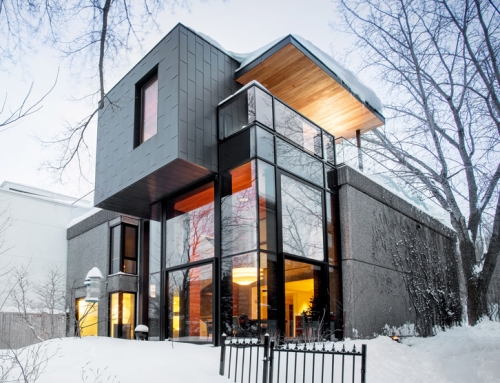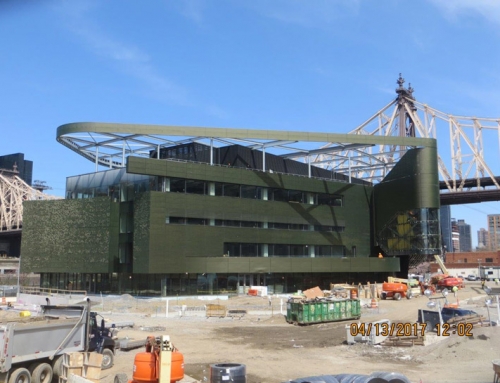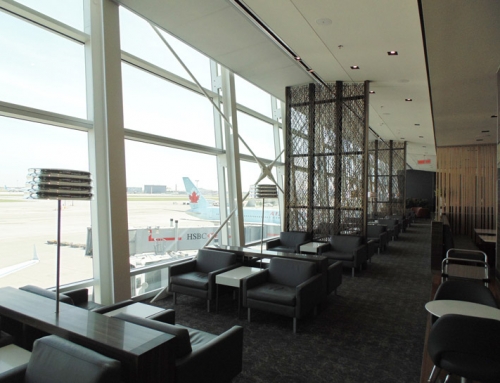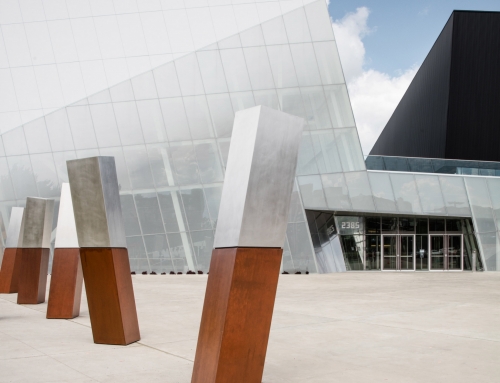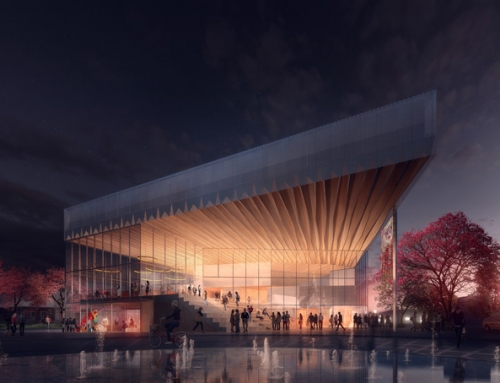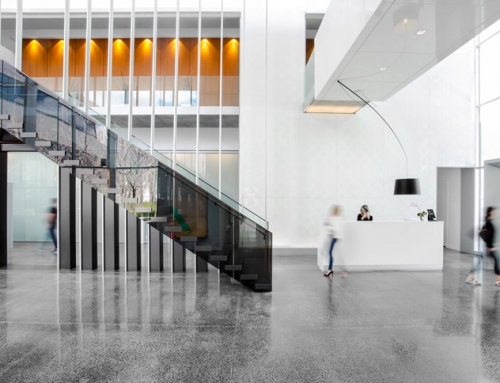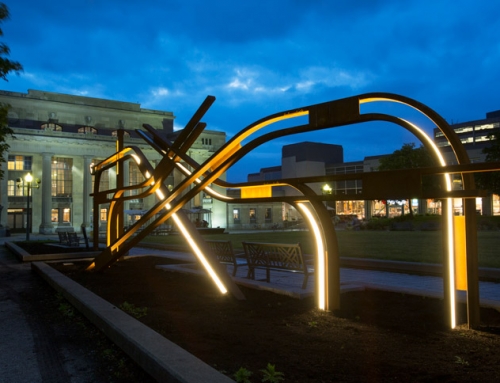Project Description
For the Centre hospitalier de l’Université de Montréal (CHUM), integrating the massive program of a 3 000 000SF teaching hospital into the dense urban fabric of downtown Montreal led to the challenge of connecting the main hospital with its supporting logistics tower, despite Montreal’s longstanding tradition of saying ‘no’ to these types of above-ground connectors. The challenge quickly became one that goes beyond the need for a critical connection between the surgery department, the laboratories and the blood bank, but the creation of an art piece that could overcome the many municipal hurdles.
The Passerelle is designed as a floating lantern over Sanguinet Street, marking the entrance to the hospital. The perforations filtering the daylight create an interesting experience from the interior during the day for the staff passing through. At night, it is illuminated from the inside, creating a different experience for passersby on the street below. This type of intervention breaks the architecture down to a series of human experiences, within the scale of the project.
Copper has a long tradition in the historic architecture of Montreal – la Ville au cent clochers, or the City of 100 steeples – as testified today by its many cathedrals, basilicas and public buildings. For the hospital, this traditional material is reinterpreted as a contemporary form, a noble material to signal key moments within the design of the 1M SF of curtain wall, in particular to mark a public entry or major point of arrival. During the design process, the idea was to push the envelope quality using parametric design and 3D printed models to study options. The illuminated copper shroud’s perforation pattern was derived from an iterative prototyping process of parametric design to express a symbolic arched gateway that maximizes openness at its base, while expressing the notion of centrality that City planners wished to underscore, responding to the unique fact that this object floats above the public way, a very rare instance in Montreal.
To create a sense of architectural lightness, the primary structural beams are concealed above, with the floor, frame and façades all suspended with the lightest of structures. The entire bridge structure is then wrapped in a series of sculpturally formed stainless steel ribs, clad with curved perforated copper panels.
The 194,000 perforations in the 3mm thick curved copper panels create a cloud of luminous rings that reflect the sun’s light during the day, but at night, filter the light emanating from within the structure to create a dramatic floating arch. In addition to creating this dynamic pattern, ever-changing throughout the day, the copper panels serve as the lateral bracing resulting in a complete integration of the components.
An art piece in itself, the design of the Passerelle acts as the new benchmark for the City’s urban design committee to justify Montreal’s longstanding tradition of saying ‘no’ to requests for pedestrian bridges over the public way. This bridge may be a game-changer for Montreal. (Source: CannonDesign + NEUF architect(e)s)
Project Team
CannonDesign + NEUF architect(e)s
Pasquin St-Jean et associés
Construction Santé Montréal
Collectif Santé Montréal


